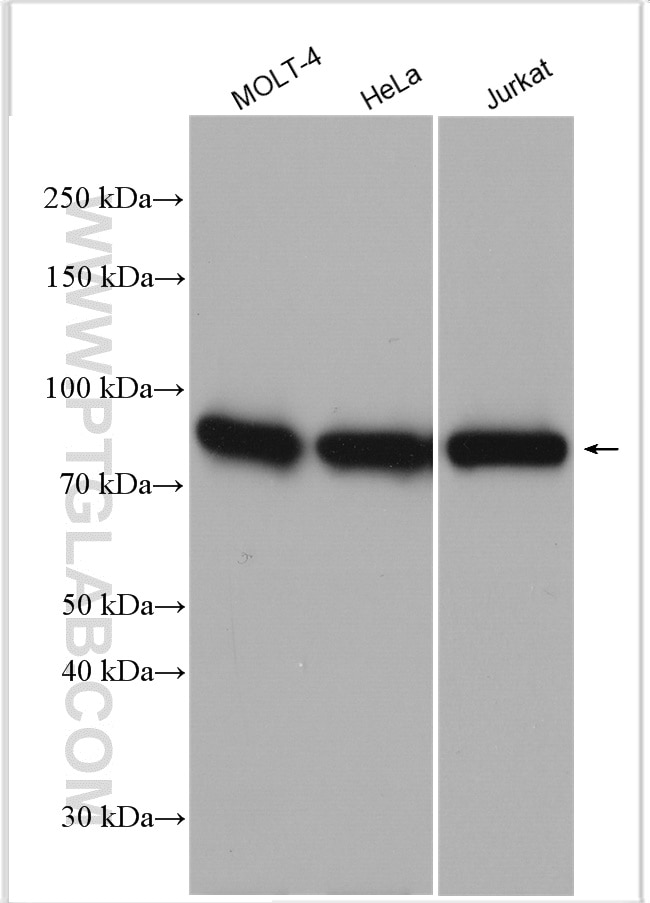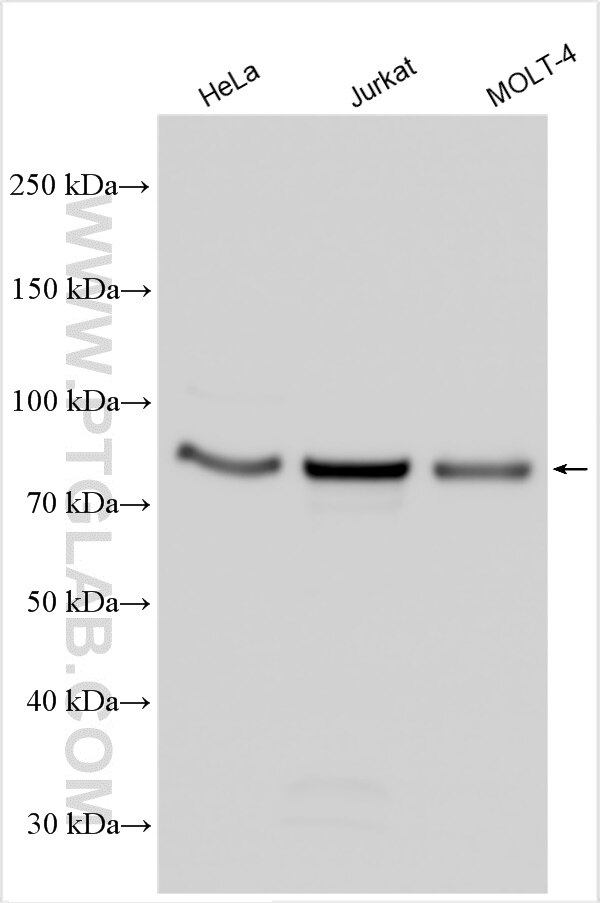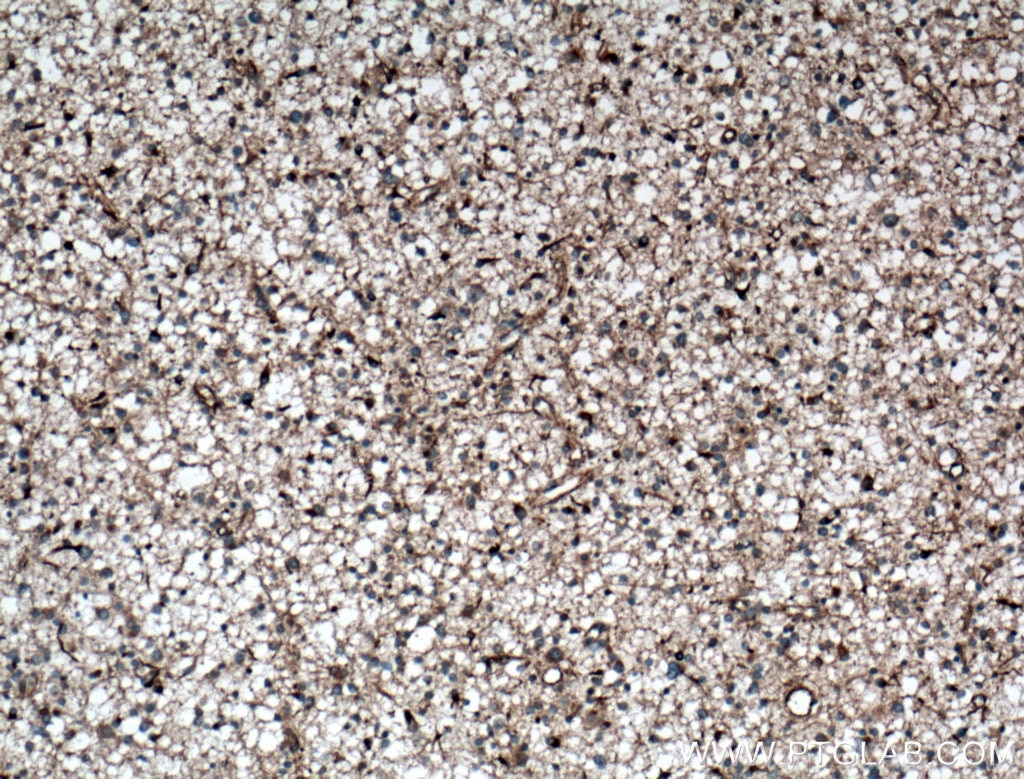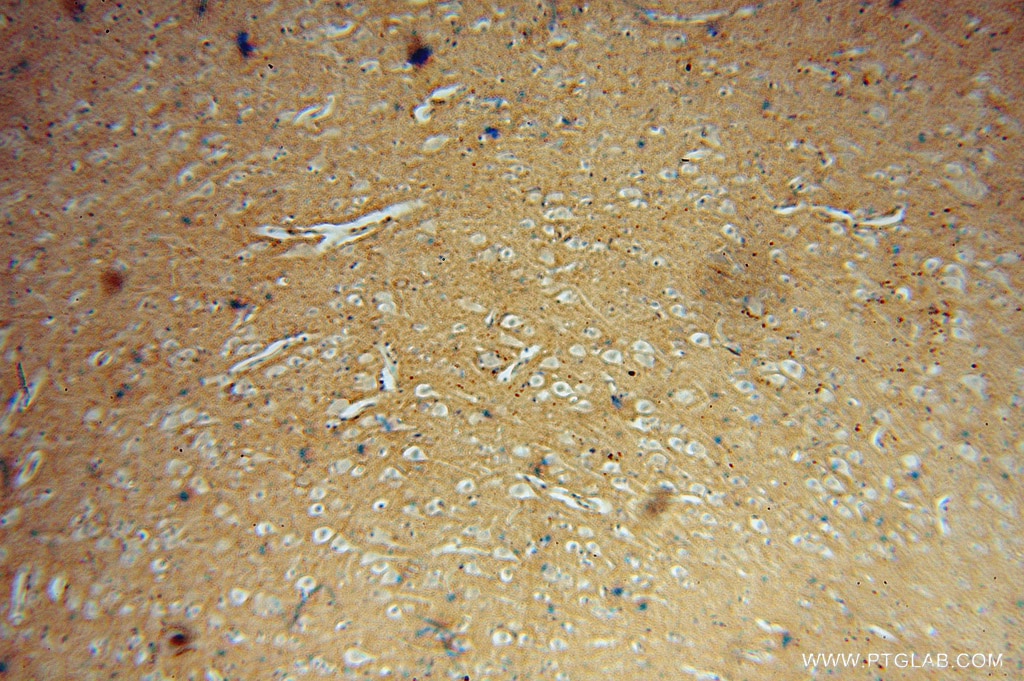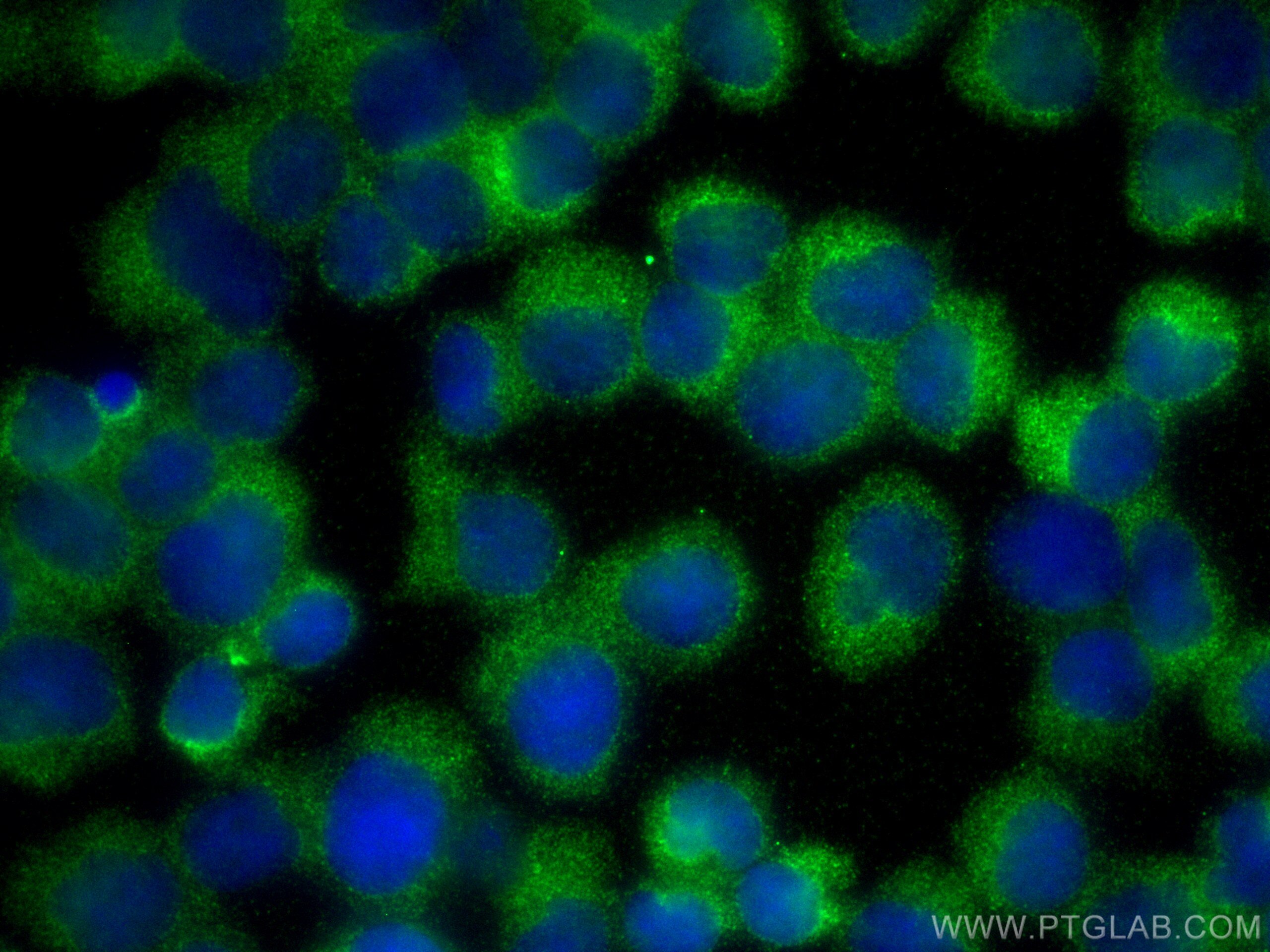- Phare
- Validé par KD/KO
Anticorps Polyclonal de lapin anti-DGKA
DGKA Polyclonal Antibody for WB, IHC, IF/ICC, FC (Intra), IP, ELISA
Hôte / Isotype
Lapin / IgG
Réactivité testée
Humain, rat, souris
Applications
WB, IHC, IF/ICC, FC (Intra), IP, ELISA
Conjugaison
Non conjugué
N° de cat : 11547-1-AP
Synonymes
Galerie de données de validation
Applications testées
| Résultats positifs en WB | cellules Jurkat, cellules HEK-293, cellules HeLa, cellules MOLT-4, tissu de cervelet de souris, tissu de cervelet humain |
| Résultats positifs en IP | cellules Jurkat |
| Résultats positifs en IHC | tissu de gliome humain, tissu cérébral humain il est suggéré de démasquer l'antigène avec un tampon de TE buffer pH 9.0; (*) À défaut, 'le démasquage de l'antigène peut être 'effectué avec un tampon citrate pH 6,0. |
| Résultats positifs en IF/ICC | cellules Jurkat, |
| Résultats positifs en FC (Intra) | cellules HeLa, |
Dilution recommandée
| Application | Dilution |
|---|---|
| Western Blot (WB) | WB : 1:2000-1:12000 |
| Immunoprécipitation (IP) | IP : 0.5-4.0 ug for 1.0-3.0 mg of total protein lysate |
| Immunohistochimie (IHC) | IHC : 1:50-1:500 |
| Immunofluorescence (IF)/ICC | IF/ICC : 1:50-1:500 |
| Flow Cytometry (FC) (INTRA) | FC (INTRA) : 0.40 ug per 10^6 cells in a 100 µl suspension |
| It is recommended that this reagent should be titrated in each testing system to obtain optimal results. | |
| Sample-dependent, check data in validation data gallery | |
Applications publiées
| KD/KO | See 7 publications below |
| WB | See 17 publications below |
| IHC | See 6 publications below |
| IF | See 1 publications below |
| IP | See 1 publications below |
Informations sur le produit
11547-1-AP cible DGKA dans les applications de WB, IHC, IF/ICC, FC (Intra), IP, ELISA et montre une réactivité avec des échantillons Humain, rat, souris
| Réactivité | Humain, rat, souris |
| Réactivité citée | Humain, souris |
| Hôte / Isotype | Lapin / IgG |
| Clonalité | Polyclonal |
| Type | Anticorps |
| Immunogène | DGKA Protéine recombinante Ag2075 |
| Nom complet | diacylglycerol kinase, alpha 80kDa |
| Masse moléculaire calculée | 735 aa, 83 kDa |
| Poids moléculaire observé | 83 kDa |
| Numéro d’acquisition GenBank | BC023523 |
| Symbole du gène | DGKA |
| Identification du gène (NCBI) | 1606 |
| Conjugaison | Non conjugué |
| Forme | Liquide |
| Méthode de purification | Purification par affinité contre l'antigène |
| Tampon de stockage | PBS with 0.02% sodium azide and 50% glycerol |
| Conditions de stockage | Stocker à -20°C. Stable pendant un an après l'expédition. L'aliquotage n'est pas nécessaire pour le stockage à -20oC Les 20ul contiennent 0,1% de BSA. |
Informations générales
DGKA(Diacylglycerol kinase alpha) is also named as DAGK, DAGK1 and belongs to the eukaryotic diacylglycerol kinase family,which is suggested to attenuate diacylglycerol-induced cell responses through the phosphorylation of this second messenger to phosphatidic acid.DGKA regulates the secretion of lethal exosomes bearing Fas ligand during activation-induced cell death of T lymphocytes.
Protocole
| Product Specific Protocols | |
|---|---|
| WB protocol for DGKA antibody 11547-1-AP | Download protocol |
| IHC protocol for DGKA antibody 11547-1-AP | Download protocol |
| IF protocol for DGKA antibody 11547-1-AP | Download protocol |
| IP protocol for DGKA antibody 11547-1-AP | Download protocol |
| Standard Protocols | |
|---|---|
| Click here to view our Standard Protocols |
Publications
| Species | Application | Title |
|---|---|---|
Nat Commun Mutant p53s generate pro-invasive niches by influencing exosome podocalyxin levels. | ||
Nat Chem Biol Reprogramming fatty acyl specificity of lipid kinases via C1 domain engineering.
| ||
Nat Commun Epigenetic regulation of diacylglycerol kinase alpha promotes radiation-induced fibrosis. | ||
EMBO J Dysfunctional natural killer cells can be reprogrammed to regain anti-tumor activity | ||
Cancer Discov Diacylglycerol Kinase α Is a Critical Signaling Node and Novel Therapeutic Target in Glioblastoma and Other Cancers.
| ||
Clin Cancer Res DGKA Provides Platinum Resistance in Ovarian Cancer Through Activation of c-JUN-WEE1 Signaling.
|
